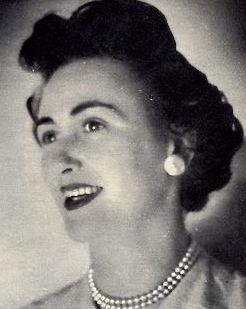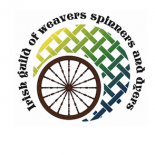
A loom is a device used to weave cloth and tapestry. The basic purpose of any loom is to hold the warp threads under tension to facilitate the interweaving of the weft threads. The precise shape of the loom and its mechanics may vary, but the basic function is the same.

Weaving is a method of textile production in which two distinct sets of yarns or threads are interlaced at right angles to form a fabric or cloth. Other methods are knitting, crocheting, felting, and braiding or plaiting. The longitudinal threads are called the warp and the lateral threads are the weft, woof, or filling. The method in which these threads are interwoven affects the characteristics of the cloth. Cloth is usually woven on a loom, a device that holds the warp threads in place while filling threads are woven through them. A fabric band that meets this definition of cloth can also be made using other methods, including tablet weaving, back strap loom, or other techniques that can be done without looms.

Flannel is a soft woven fabric, of varying fineness. Flannel was originally made from carded wool or worsted yarn, but is now often made from either wool, cotton, or synthetic fiber. Flannel is commonly used to make tartan clothing, blankets, bed sheets, sleepwear, and several other uses.

The malong is a traditional Filipino-Bangsamoro rectangular or tube-like wraparound skirt bearing a variety of geometric or okir designs. The malong is traditionally used as a garment by both men and women of the numerous ethnic groups in the mainland Mindanao and parts of the Sulu Archipelago. They are wrapped around at waist or chest-height and secured by tucked ends, with belts of braided material or other pieces of cloth, or are knotted over one shoulder. They were traditionally hand-woven, with the patterns usually distinctive to a particular ethnic group. However, modern malong are usually machine-made or even imported, with patterns that mimic the traditional local designs.

Double cloth or double weave is a kind of woven textile in which two or more sets of warps and one or more sets of weft or filling yarns are interconnected to form a two-layered cloth. The movement of threads between the layers allows complex patterns and surface textures to be created.

Jamdani is a fine muslin textile produced for centuries in South Rupshi of Narayanganj district in Bangladesh on the bank of Shitalakhwa river.

Harris tweed is a tweed cloth that is handwoven by islanders at their homes in the Outer Hebrides of Scotland, finished in the Outer Hebrides, and made from pure virgin wool dyed and spun in the Outer Hebrides. This definition, quality standards and protection of the Harris tweed name are enshrined in the Harris Tweed Act 1993.

A sport coat, also called a sport jacket, is a men's smart casual lounge jacket designed to be worn on its own without matching trousers, traditionally for sporting purposes. Styles, fabrics, colours and patterns are more varied than in most suits; sturdier and thicker fabrics are commonly used, such as corduroy, suede, denim, leather, and tweed.

Tweed is a rough, woollen fabric, of a soft, open, flexible texture, resembling cheviot or homespun, but more closely woven. It is usually woven with a plain weave, twill or herringbone structure. Colour effects in the yarn may be obtained by mixing dyed wool before it is spun.

Magee of Donegal are a textile manufacturer, clothing manufacturer and retailer, and manufacturer and retailer of home goods based in Donegal Town, County Donegal, Ireland. The company are known for their woolen Donegal tweed, but also manufacture items from linen, cashmere, silk and other materials.

Kota Doria or Kota Doriya is the name of a light woven fabric made of tiny woven squares (khat) which is still handwoven on traditional pit looms in Kaithoon near Kota in Rajasthan and in some of the surrounding villages. Kota Doriya Sarees are made of pure cotton and silk and have square like patterns known as khats on them. The chequered weave of a Kota sari is very popular for their lightweight and comfortable wear. They are very fine weaves and weigh very little.

Sybil Connolly was a celebrated fashion designer and global icon known for her innovative use of traditional Irish textiles in haute couture. Often described as "Dublin's Dior", she achieved international repute and success, making her one of the first Irish designers to do so. She was a member of the "Big Three" Irish fashion designers, and was described by former Taoiseach Jack Lynch as: "a national treasure."

Aso oke fabric, is a hand-woven cloth created by the Yoruba people of west Africa. Usually woven by men and women, the fabric is used to make men's gowns, called agbada and hats, called fila, as well as women's wrappers, called iro and head tie, called gele.
Mulhern is an Irish Catholic family name. It is anglicized form of Gaelic Ó Maoilchiaráin, ‘descendant of Maoilchiaráin’ , a personal name meaning ‘devotee of (Saint) Ciarán’. The Mulhern family is largely based in Gaeltacht communities across County Donegal, Ireland (1500–present) with also distant relatives scattered around the United Kingdom and North America.

The Irish Guild of Weavers, Spinners, and Dyers (IGWSD) is an organisation for the promotion and preservation of hand weaving, spinning and dyeing in Ireland.
Neillí Mulcahy was an Irish designer. In 1962, Mulcahy co-founded the Irish Haute Couture Group with Ib Jorgensen and Irene Gilbert.
Else Regensteiner was a German weaver, textile designer, writer, and teacher who was primarily based in Chicago, Illinois. She is known for founding and heading the Weaving Department at the School of the Art Institute of Chicago and for the creation of the reg/wick Hand Woven Originals weaving studio with Julia McVickers.

Tenun is an artful Indonesian technique of making a fabric by weaving different colours of threads. Tenun belongs to one of the typical Indonesian cultural arts produced by hand skills using traditional looms. The word Tenun itself has a high meaning, historical value, and technique in terms of colors, motifs, and types of materials and threads used and each region has its own characteristics. In addition, Tenun is also one of Indonesia's original cultural heritages that is still maintained and preserved to this day.
Spence Bryson is a Northern Irish textile company which manufactures and distributes linen and linen products.
Gerd Hay-Edie was a pioneering handweaver and textile designer. She created The Mourne Check and The Mourne Mist for Robin Day's furniture range and fabric for Sybil Connolly’s clothing designs.

















